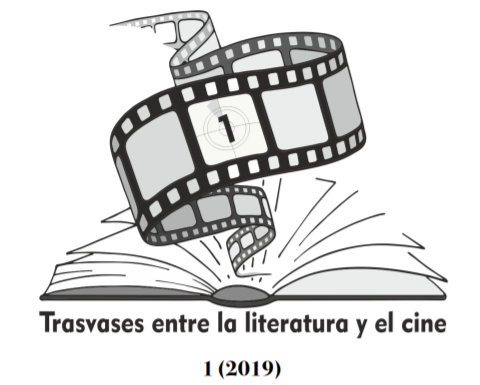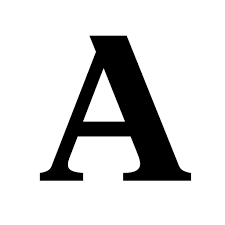Literary myths and their transfer to the cinema. Towards a new post-terrifying paradigm: the socialization of the monster
DOI:
https://doi.org/10.24310/Trasvasestlc.v0i1.6229Keywords:
horror cine, horror literature, mitochritic, monsters, series, fantasticAbstract
In this article we intend to reflect briefly on the evolution that the aesthetic figure of three of the literature classic monsters (vampires, zombies and demons) has expe- rienced in the cinema, in order to reflect on how a radically renewing contemporary bestiary has been constructed both in cinema and literature. As we will try to show here, in recent times their total assimilation has caused that in some audiovisual and novelistic fictions the crisis of the monstrosity has become a rupture of alterity, that is, the “others” have been incorporated into the “our-Self”, and ceased to be regarded as strangers. Besides, the supernatural terror has been replaced by social preoccupations.
Downloads
Metrics
Publication Facts
Reviewer profiles N/A
Author statements
Indexed in
-
—
- Academic society
- N/A
- Publisher
- Universidad de Málaga
References
ALAZRAKI, Jaime (1983), En busca del unicornio: los cuentos de Julio Cortázar. Elementos para una poética de lo neofantástico, Madrid, Gredos.
BOLUK, Stephanie y Wylie LENZ (2011), «Generation Z, the Age of
Apocalypse», en W. Lenz y S. Boluk (eds.), Generation Zombie,
Carolina del Norte, McFarland, págs. 1-17.
CAMPRA, Rosalba (2008), Territorios de la ficción. Lo fantástico, Sevilla, Renacimiento.
CASAS, Ana (2012), «Prólogo» a A. Casas (ed.), Las mil caras del monstruo, Sevilla, Bracket Cultura, págs. 5-18.
FREUD, Sigmund (1992), Obras Completas. XVII, Buenos Aires, Amorrortu Editores.
HOLLINGER, Veronica (1997), «Fantasies of absence: The postmodern vampire», en J. Gordon y V. Hollinger (eds.), Blood read: The vampire as metaphor in contemporary culture, Philadelphia, University of Pennsylvania Press, págs. 199-212.
JACKSON, Rosemary (1986), Fantasy: Literatura y subversión, Buenos Aires, Catálogos Editora.
MARTÍNEZ DÍAZ, Alicia (2010), «La vampirización del mito vampírico: del conde Drácula a Crepúsculo», en J. M. Losada Goya (coord.), Mito y mundo contemporáneo. La recepción de los mitos antiguos, medievales y modernos en la literatura contemporánea, Bari, Levanti Editori, págs. 124-160.
LATTS, Todd (2014), «The New Horror Movie», en B. Cogan y T.
Gencarelly (eds.), Baby Boomers and Popular Culture. An inquiry into
America’s most powerful generation, California, Praeger, págs. 147-164.
ROAS, David (2001), «La amenaza de lo fantástico», en D. Roas (comp.), Teorías de lo fantástico, Madrid, Arco Libros, págs. 7-46.
ROAS, David (2011), Tras los límites de lo real. Una definición de lo fantástico, Madrid, Páginas de Espuma.
ROAS, David y Ana CASAS (2016), Voces de lo fantástico en la narrativa española contemporánea, Málaga, EDA Libros.
SÁNCHEZ TRIGOS, Rubén (2013), «Muertos, infectados y poseídos: el zombi en el cine español contemporáneo», Pasavento, 1/1, págs. 11-
THACKER, Eugene (2015), En el polvo de este mundo, Madrid, Materia Oscura.
TRAPERO LLOBERA, Patricia (2015), «Todos los monstruos son humanos: el imaginario cultural y la creación de bestiarios contemporáneos en American Horror Story», Brumal, 3/2, págs. 69-88.
Downloads
Published
How to Cite
Issue
Section
License
All authors published in this journal accept the following copyright terms:
a. Authors retain their authors´ rights (copyright) and grant First Publication Rights to the journal, which whill be published under a the Creative Commons Attribution-NonCommercial-ShareAlike 4.0 International (CC BY-NC-SA 4.0) license. All about this license is available in the following link: <http://creativecommons.org/licenses/by-nc-sa/4.0>
b. Authors may separately establish additional agreements for the non-exclusive distribution of the version of the work published in the journal (e.g. including it in an institutional repository, or publishing it in a book) with an acknowledgement of its initial publication in this journal.
c. Authors are allowed and encouraged to disseminate their work electronically (e.g. in institutional repositories or on their own website) as this can lead to productive exchanges, as well as earlier and more extensive citation of published work.
The author is responsible for obtaining permission from the copyright holder when using copyrighted materials.
This electronic journal is published by University of Málaga (UmaEditorial), thus it is necessary to cite the origin of any partial or total reproduction.








22.png)










